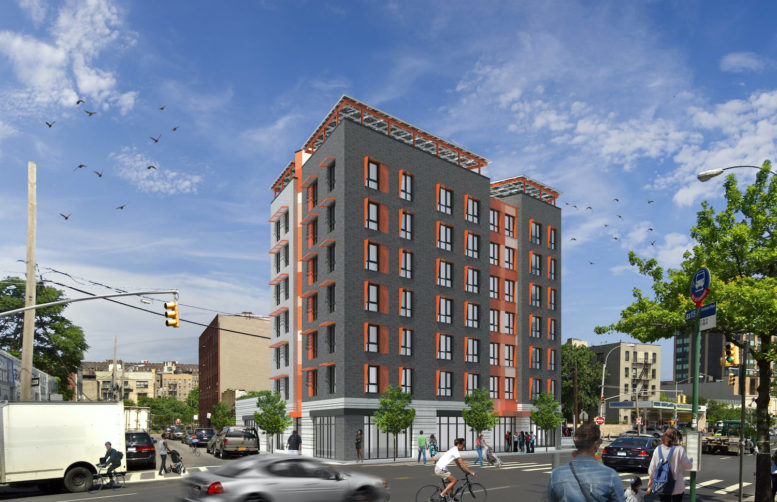Multistate Agreement Cancels $1.7 Billion in Student Debt, Recovers $95 Million in Restitution for Thousands of Students Nationwide
New York Student Borrowers Will Have More than $110 Million in Debt Cancelled
New York Attorney General Letitia James today announced a $1.85 billion agreement with one of the nation’s largest student loan servicers, Navient, after it deceived thousands of student loan borrowers into costly, long-term, forbearance plans, causing students to pay more than they should have. A bipartisan coalition of 39 attorneys general negotiated the multistate agreement that cancels $1.7 billion in private student loan debt and recovers $95 million in restitution for thousands of students nationwide.
“For too long, Navient contributed to the national student debt crisis by deceptively trapping thousands of students into more debt,” said Attorney General James. “Today’s billion-dollar agreement will bring relief to thousands of borrowers in New York and across the nation and help them get back on their feet. Navient will no longer be able to line its pockets at the expense of students who are trying to earn a college degree. Student loan servicers that operate through deception and wrongdoing will not be tolerated and will be held accountable by my office.”
A multistate investigation into Navient found that, since 2009, the company has been steering struggling student loan borrowers into costly, long-term forbearances instead of counseling them about the benefits of more affordable income-driven repayment plans. The interest that accrued because of Navient’s forbearance steering practices was added to the borrowers’ loan balances, pushing students further in debt. Had the company instead provided borrowers with the help it promised, income-driven repayment plans could have reduced payments to as low as $0 per month, provided interest subsidies, and/or helped attain forgiveness of any remaining balance after 20 to 25 years of qualifying payments (or 10 years for borrowers qualified under the Public Service Loan Forgiveness Program [PSLF]).
The investigation found that Navient also provided predatory, subprime, private loans to students attending for-profit schools and colleges with low graduation rates, although the company knew that a very high percentage of those borrowers would be unable to repay the loans. Navient allegedly made these risky subprime loans as “an inducement to get schools to use Navient as a preferred lender” for highly profitable federal and “prime” private loans, without regard for borrowers and their families, many of whom it unknowingly ensnared in debts they could never repay.
Under the terms of today’s agreement, Navient will cancel the remaining balance on nearly $1.7 billion in subprime, private student loan balances owed by nearly 66,000 borrowers nationwide. Additionally, a total of $95 million in restitution payments, of about $260 each, will be distributed to approximately 350,000 federal loan borrowers who were placed in certain types of long-term forbearances. Borrowers who will receive restitution or debt cancellation span all generations, as Navient’s harmful conduct impacted everyone from students who enrolled in colleges and universities immediately after high school to mid-career students who dropped out after enrolling in a for-profit school in the early to mid-2000s. Navient will also be forced pay $142.5 million to the states as part of today’s agreement.
New York will specifically receive a total of about $6.8 million in restitution payments for more than 25,000 federal loan borrowers. Additionally, about 4,300 New York borrowers will receive over $110 million in private loan debt cancellation. New York state will also receive almost $1.2 million in cash.
The agreement also includes conduct reforms that require Navient to explain the benefits of income-driven repayment plans and to offer to estimate income-driven payment amounts before placing borrowers into optional forbearances. Additionally, Navient must train specialists who will advise distressed borrowers concerning alternative repayment options and counsel potentially eligible workers concerning PSLF and related programs. The conduct reforms imposed by the agreement include prohibitions on compensating customer service agents in a manner that incentivizes them to minimize time spent counseling borrowers.
Finally, the agreement requires Navient to notify borrowers about the U.S. Department of Education’s recently announced PSLF limited waiver opportunity, which temporarily offers millions of qualifying public service workers the chance to have previously nonqualifying repayment periods counted toward loan forgiveness — provided that they consolidate into the Direct Loan Program and file employment certifications by October 31, 2022.
As a result of today’s agreement, borrowers receiving private loan debt cancellation will receive a notice from Navient, along with refunds of any payments made on the cancelled private loans after June 30, 2021. Federal loan borrowers who are eligible for a restitution payment of approximately $260 will receive a postcard in the mail from the settlement administrator later this spring.
Federal loan borrowers who qualify for relief under this agreement do not need to take any action other than updating or creating their studentaid.gov account to ensure the U.S. Department of Education has their current address. Borrowers can learn more about today’s agreement online. Consumers who are confused about or would like to learn more about their student loans can do so at the National Consumer Law Center’s Student Loan Borrowers Assistance Project.
Until recently, Navient had a contract to service federal student loans owned by the U.S. Department of Education, including a large portfolio of loans made under the Direct Loan Program and a large portfolio of loans made under the Federal Family Education Loan (FFEL) program. On October 20, 2021, the U.S. Department of Education announced the transfer of this contract from Navient to AidVantage, a division of Maximus Federal Services, Inc. However, Navient will continue to service federal student loans made under the FFEL Program that are owned by private lenders, as well as non-federal private student loans.
Today’s consent judgment is accompanied by a complaint naming Navient Corporation, Navient Solutions, LLC, Pioneer Credit Recovery, Inc., and General Revenue Corporation as defendants. The agreement also requires court approval.




